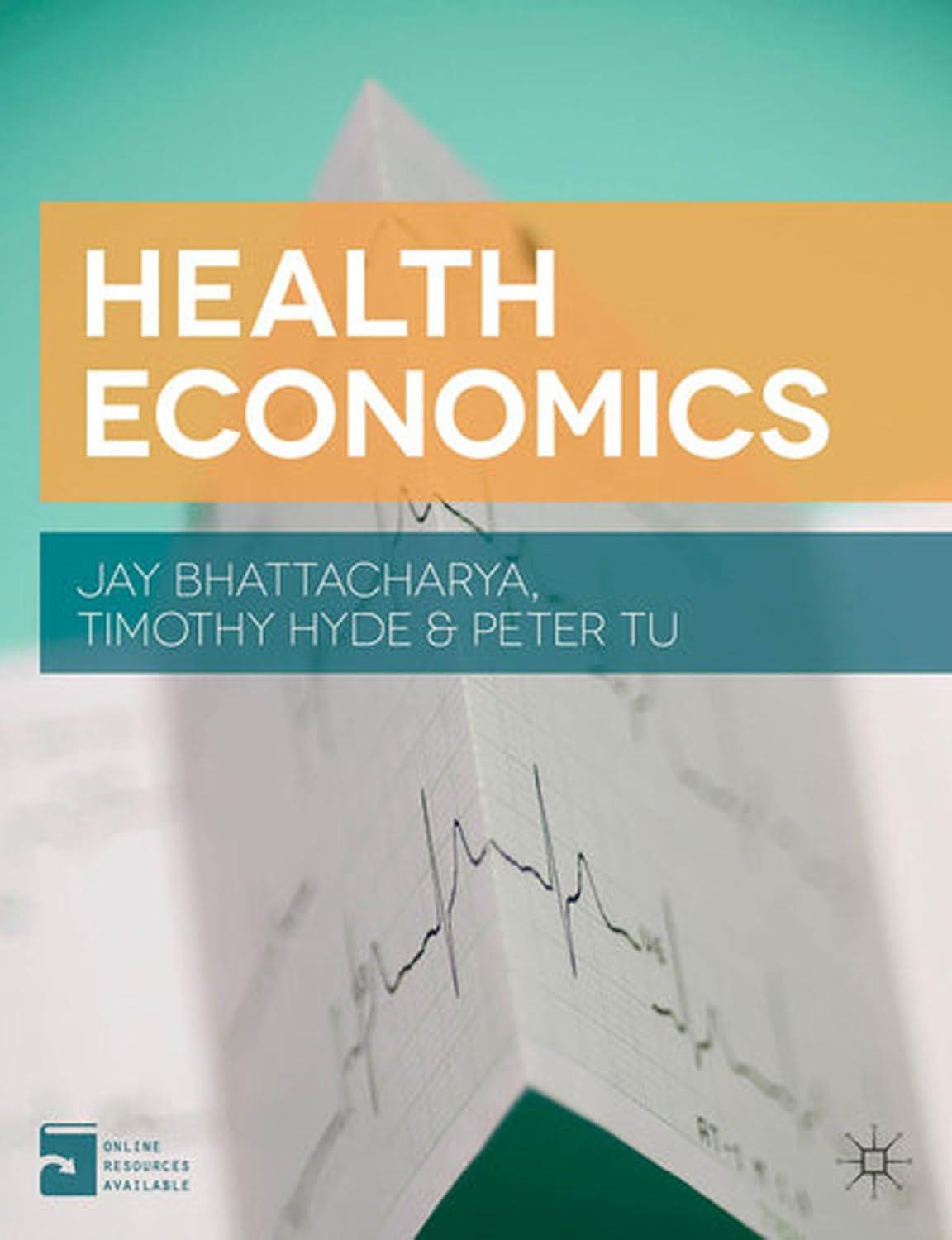Review the previous exercise before embarking on this one. Data in previous exercise A simple future elderly
Question:
Review the previous exercise before embarking on this one.
Data in previous exercise
A simple future elderly model. In this exercise, you will create a very simple version of the FEM designed at RAND. Our model will follow a cohort of 65-year-olds as they age, and each period of the model will represent one year. In the first version of our model, the elderly will have three states: h (healthy), s (sick with cancer), and r (deceased). In a given period, each elderly person assumes a certain state for the entire period. Between periods, the elderly transition with the following likelihoods:
(1) Healthy to deceased: P(rt+1|ht)=δ
(2) Healthy to sick: P(st+1|ht)=ρ(1−δ)
(3) Sick to deceased: P(rt+1 |st)=δ +γ (1−δ) where, for instance, condition 1 implies that a person has a δ chance of becoming deceased in period t +1, given that she is healthy in period t.
a. Use Excel, Matlab, or similar software to build a version of our model. Your model should be able to
• Track a cohort of 100 people throughout several periods.
• Assign and track states to each simulated elderly person in each period.
• Track total costs over each period.
• Randomly generate a new set of states for each subsequent period based on the transition probabilities. Important: make sure to design your model so that you can easily change these transition probabilities for each run of the model.
One convenient implementation might involve a spreadsheet or matrix where each column represents a year and each row represents a “person.”
b. Assume the following values: δ = ρ = γ = η = 0.1. Show that the probability of a healthy person remaining healthy in the next period is 0.72.
c. Using these assumed values, run the model five times, starting each time with a cohort of 100 healthy (state h) 65-year-olds in period 0. Run the model until period 35 each time (when the lucky surviving elderly reach age 100). Report your total costs in each of the five runs.
d. Run the model a sixth time but set
![]()
Why is this a more realistic assumption? How does this affect costs over35 years?
e. Run the model a seventh time with the new δ function and ρ = 0. 03 (people are now less likely to get cancer). Does this increase costs over 35 years or decrease costs over 35 years?
f. Run the model one last time with the new δ function, the new ρ, and assume that nursing-home care is getting more efficient: cd =$1,000. How big of an effect does this have on decreasing overall costs?
g. Explain how cancer and stroke interact in this model.
Step by Step Answer:






